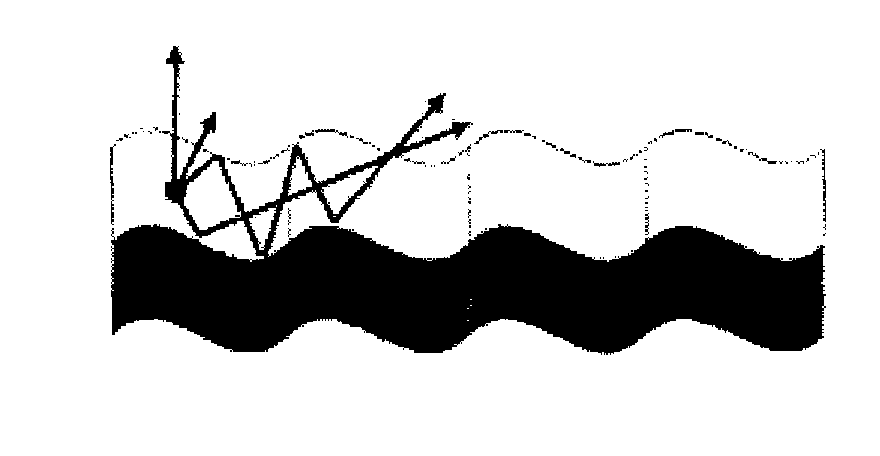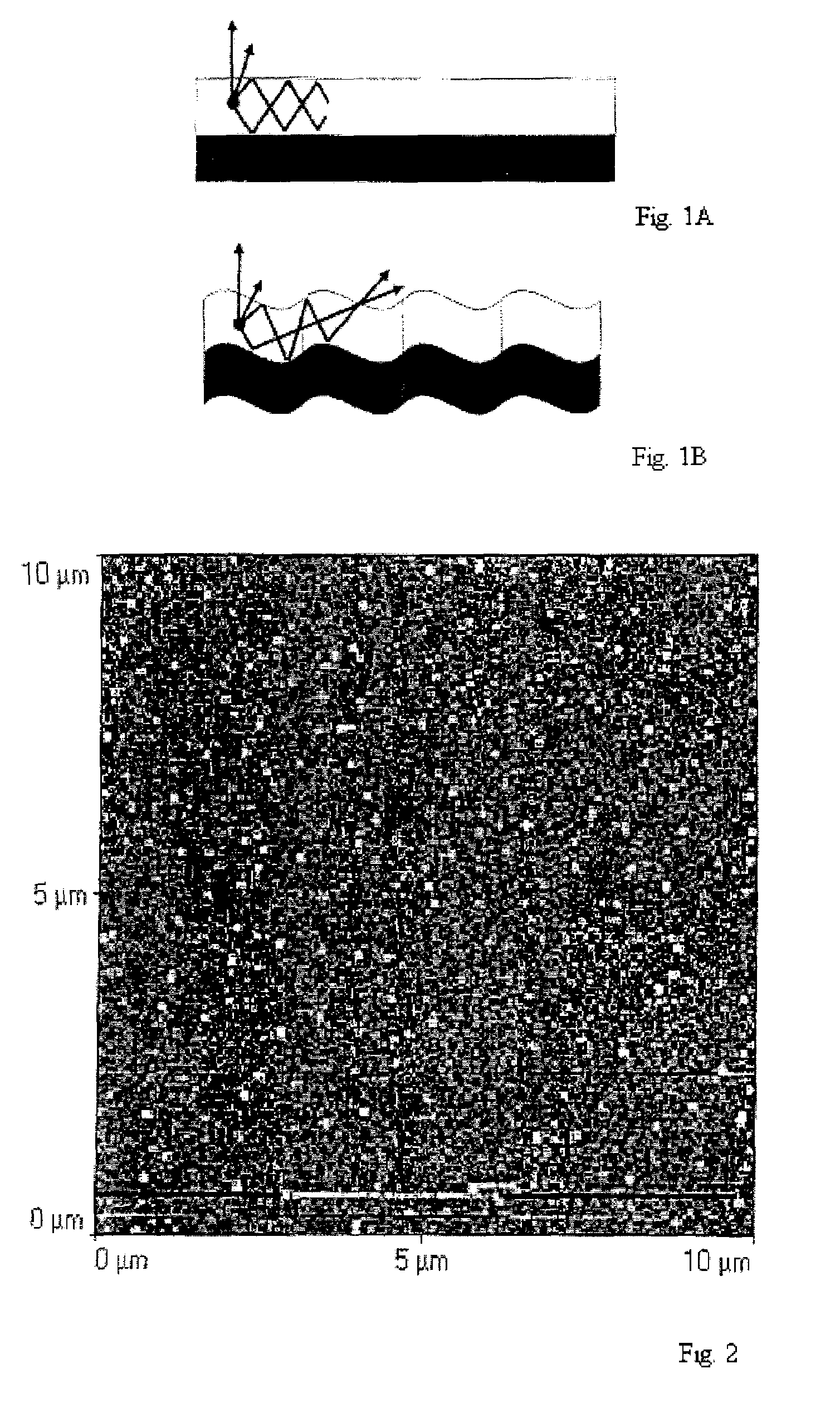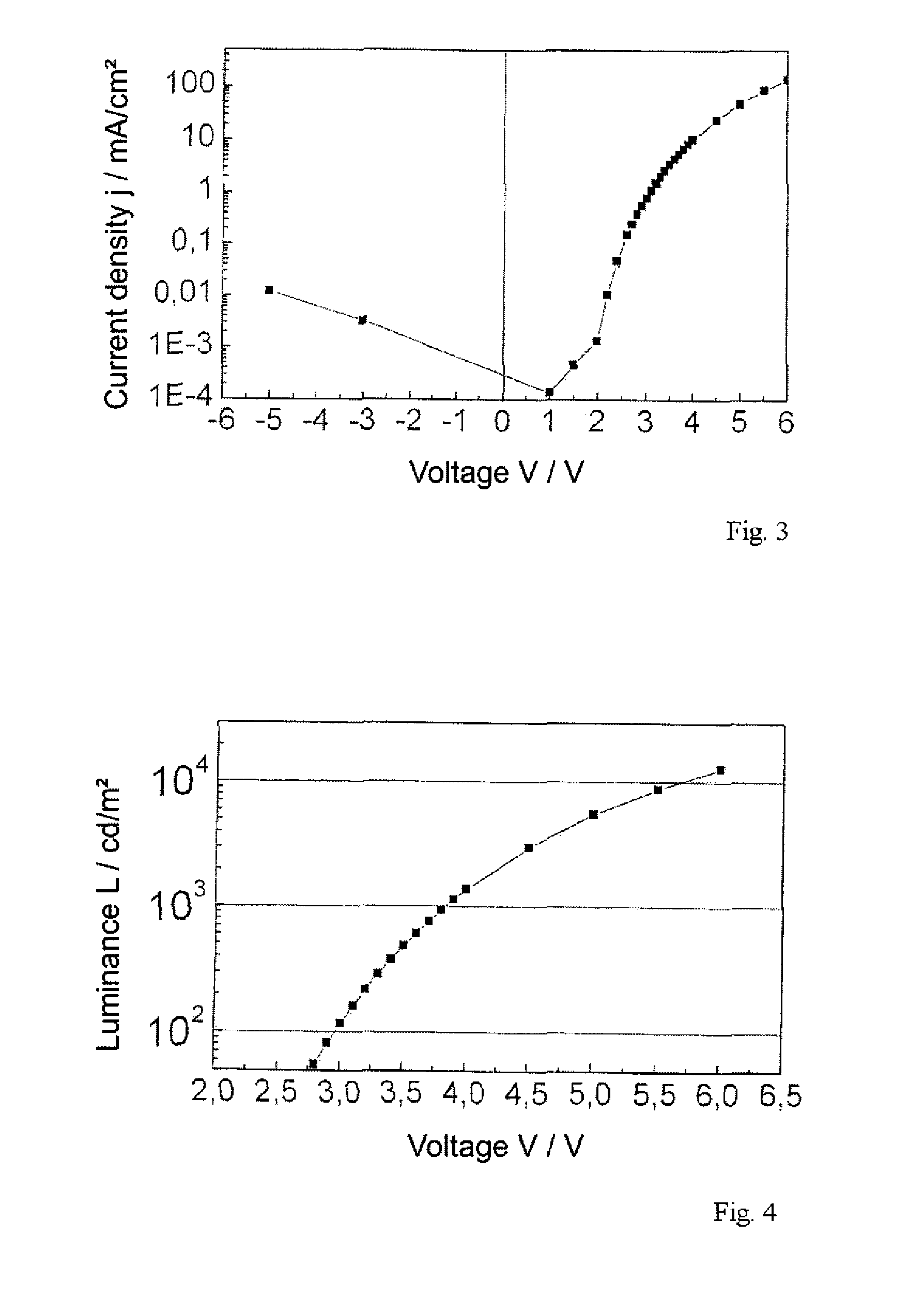Top-emitting device and illumination device
a top-emitting device and illumination device technology, applied in the direction of discharge tube/lamp details, discharge tube luminescnet screens, organic semiconductor devices, etc., can solve the problems of oleds, structural elements, and oleds that are not limited in their performance capacity, and luminous efficiency is restricted in principle by loss mechanisms, so as to improve light extraction and production economic
- Summary
- Abstract
- Description
- Claims
- Application Information
AI Technical Summary
Benefits of technology
Problems solved by technology
Method used
Image
Examples
Embodiment Construction
[0035]The invention is explained as follows in greater detail on the basis of embodiment examples with reference to the Figures of a drawing. The Figures show the following:
[0036]FIG. 1A Schematic illustration to explain a light reflection on a plane surface;
[0037]FIG. 1B Schematic illustration to explain a light reflection on a surface provided with a surface structure;
[0038]FIG. 2 Experimental results for a measurement of a surface structure by means of scanning force microscopy;
[0039]FIG. 3 A current density—voltage—characteristic for a top-emitting device;
[0040]FIG. 4 A luminance—voltage—characteristic for the top-emitting device;
[0041]FIG. 5 A graphic illustration of the luminance as a factor of the operating time for the top-emitting device;
[0042]FIG. 6 A schematic illustration for a surface configuration of an embossing stamp or an embossing roll; and
[0043]FIG. 7 A schematic illustration for a further surface configuration of an embossing stamp or an embossing roll.
[0044]FIG....
PUM
 Login to View More
Login to View More Abstract
Description
Claims
Application Information
 Login to View More
Login to View More - R&D
- Intellectual Property
- Life Sciences
- Materials
- Tech Scout
- Unparalleled Data Quality
- Higher Quality Content
- 60% Fewer Hallucinations
Browse by: Latest US Patents, China's latest patents, Technical Efficacy Thesaurus, Application Domain, Technology Topic, Popular Technical Reports.
© 2025 PatSnap. All rights reserved.Legal|Privacy policy|Modern Slavery Act Transparency Statement|Sitemap|About US| Contact US: help@patsnap.com



